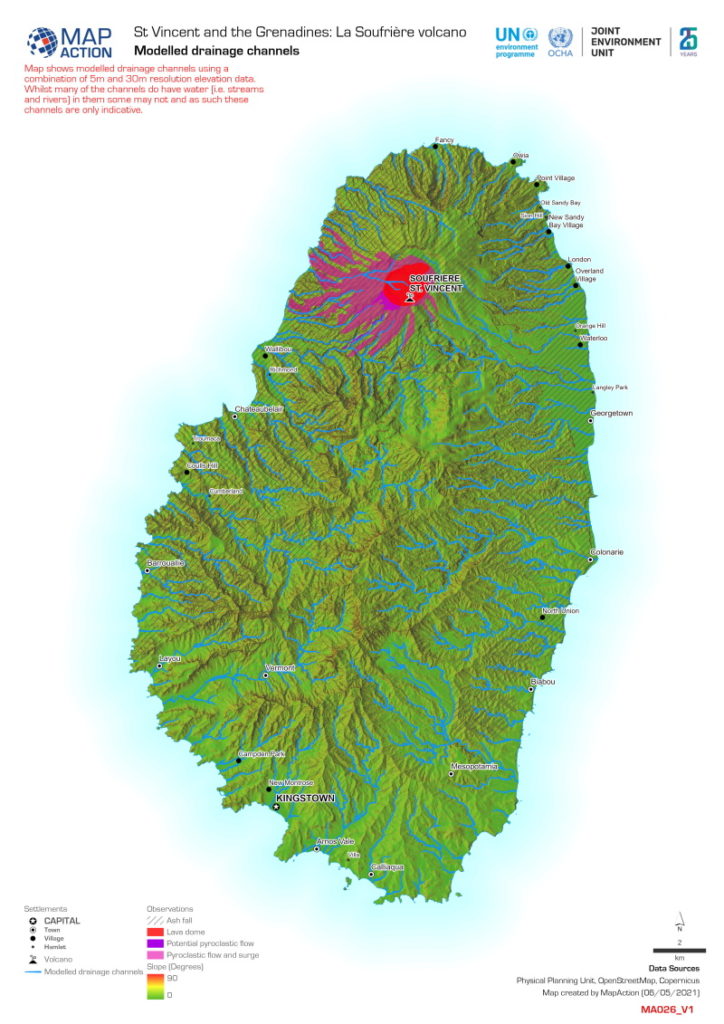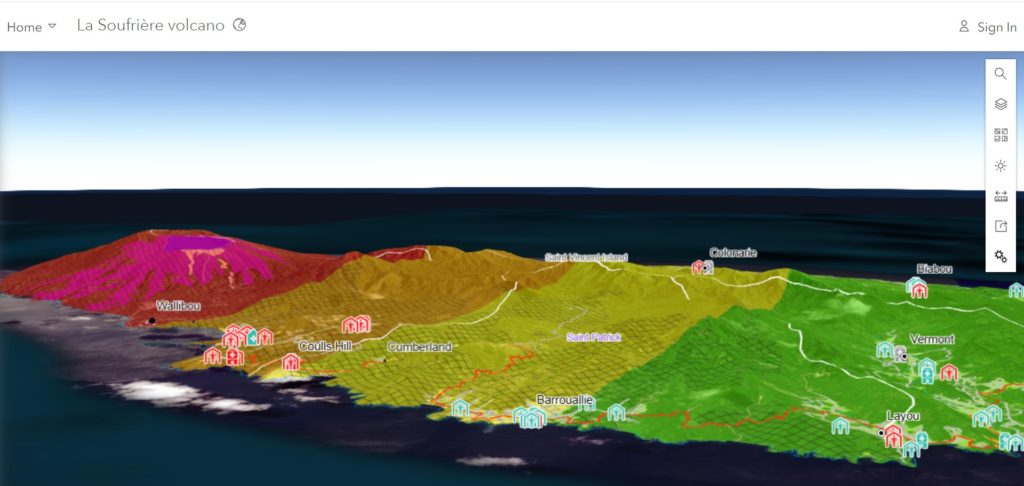
Mapping the La Soufrière volcanic eruption

St Vincent and the Grenadines La Soufriere volcano: pre-event modelling of volcanic hazards in northern St Vincent
International humanitarian geospatial charity MapAction has been providing mapping and information management support to the La Soufrière volcano emergency on the Caribbean island of St Vincent, in St Vincent and the Grenadines. We’ve been helping the Caribbean Disaster Emergency Management Agency (CDEMA) and the UN’s Environment Emergency Teams understand the evolving impacts of the crisis.
Explosive eruptions from La Soufriere beginning on 9 April caused ash clouds to cover much of St Vincent, Bequia and southern St Lucia, as well large parts of Barbados. The volcanic dome collapsed and pyroclastic flows descended from the mountain top. By 7 April, around 16,000 residents had been advised to evacuate following early signs of activity.

Overview of Affected Areas with volcanic eruption & Affected Population (as of 18 Apr 2021)
Monitoring of the volcanic eruption has been difficult as existing seismic stations were knocked out and it became dangerous to travel into the area. Recent rains have washed the ash into rivers and the surrounding sea, causing environmental damage. Mudflows (lahars) pose a dangerous threat to river valleys surrounding the volcano.

St Vincent and the Grenadines La Soufriere volcano: modelled drainage channels
 View all the volcano mapping relating to this emergency here or read the blog by MapAction volunteer Lavern Ryan about her experience of being a part of the response team.
View all the volcano mapping relating to this emergency here or read the blog by MapAction volunteer Lavern Ryan about her experience of being a part of the response team.
Did you like the article? Read more and subscribe to our monthly newsletter!







